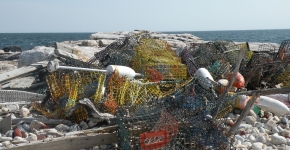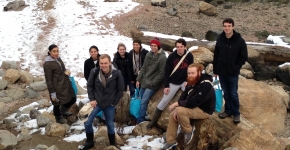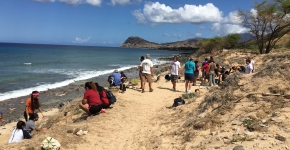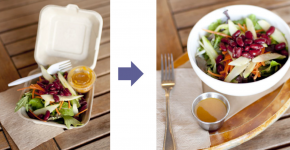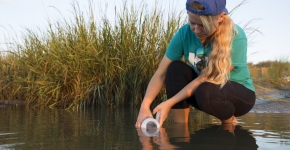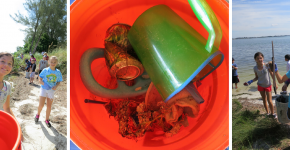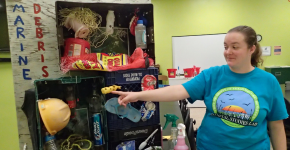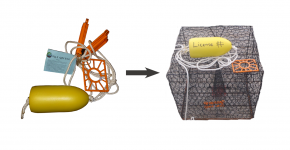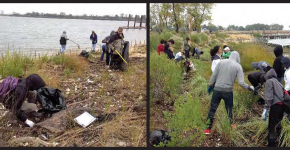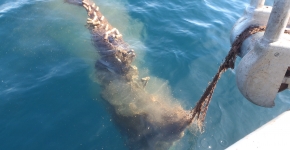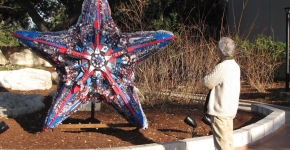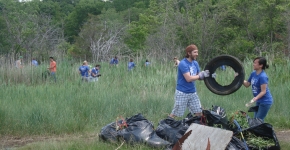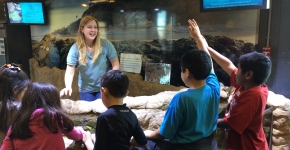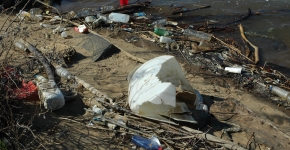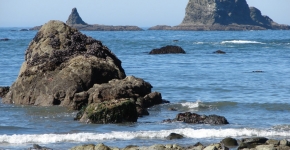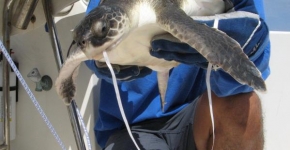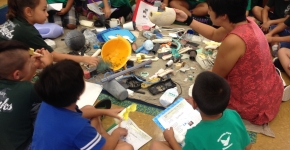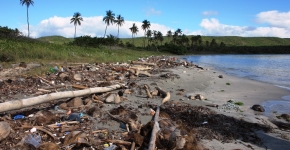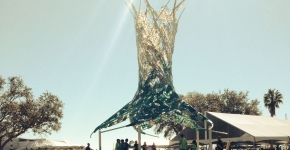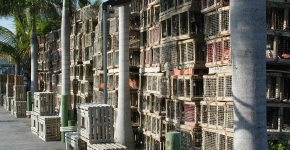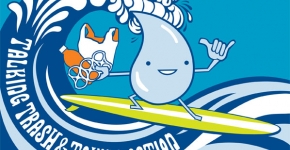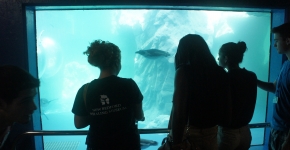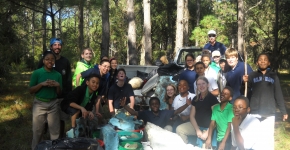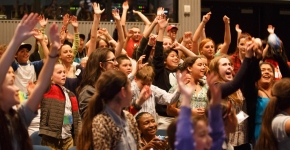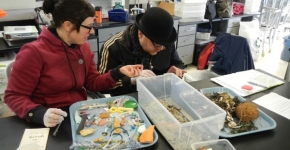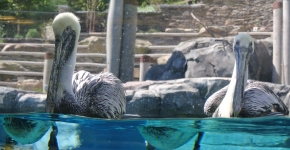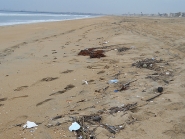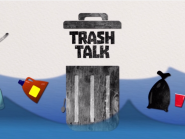Fishing for Energy is a partnership to prevent and reduce the impacts of derelict fishing gear in the marine environment.
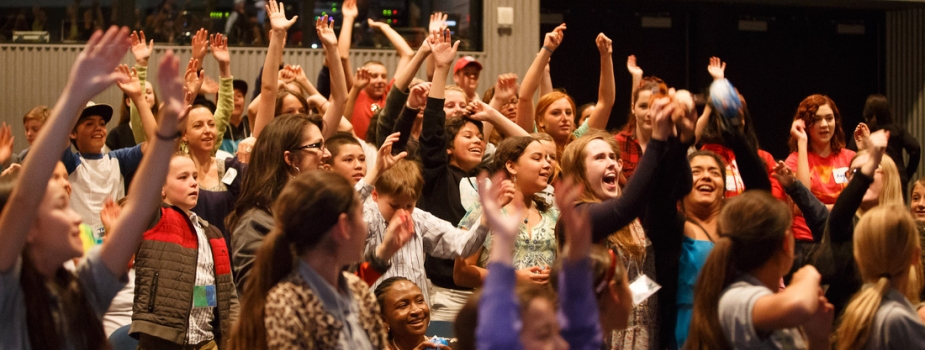
Prevention
Each fiscal year (October through September), the Marine Debris Program supports projects across the country that use outreach and education as a way to prevent marine debris. These projects aim to change behavior, especially among youth, and provide them with hands-on experiences that deepen their understanding of the marine debris problem.
(Photo Credit: Monterey Bay Aquarium)
Special Projects
Resources - Links
see also:
2016 Active Projects
-
The Center for Alaskan Coastal Studies is working to build awareness of marine debris through field experiences and zero waste campaigns at local schools and businesses.
-
The University of Georgia Marine Extension and Georgia Sea Grant worked with teachers from Glynn Middle School in Brunswick, GA, to engage middle school students in finding ways to reduce and prevent marine debris.
-
Sea Education Association is working to reduce the use of single-use plastic items by engaging students in lessons on marine debris, social science research, and the creation of a local campaign to educate the community and promote behavior change.
-
The University of the Virgin Islands is working to reduce land-based sources of marine debris in the U.S. Virgin Islands through a targeted ridge-to-reef and watershed educational and outreach program.
-
One Cool Earth is partnering with 17 schools in Paso Robles and Atascadero, California, to implement school litter and waste reduction programs.
-
The School District of the City of Erie is leading a district-wide education and outreach effort with students, teachers, and the community to reduce land-based marine debris by combining curriculum with stewardship.
-
Bow Seat Ocean Awareness Programs is implementing a new Marine Debris Creative Advocacy Competition which challenges teens to design and implement a project that reduces or prevents marine debris.
-
Trash Free Maryland is launching a multi-year social marketing campaign to reduce land-based litter in Baltimore City.
-
Pacific Whale Foundation is launching a public awareness campaign to inform, educate, and involve the public in marine debris awareness and policy focused on tobacco-free beaches in Maui, Hawaii.
-
Ship Island Excursions is working to provide marine debris education and outreach to coastal Mississippi students as well as passengers on the Ship Island ferry.
-
Sea Turtle, Inc. is raising awareness of the effects of marine debris on endangered sea turtles in the lower Laguna Madre and Gulf of Mexico by creating permanent, bilingual marine debris education displays and engaging the community in cleanups.
2015 Active Projects
-
The Gulf of Maine Lobster Foundation is working to implement a multifaceted STEM education program focusing on ocean literacy and marine debris in the Gulf of Maine.
-
The Northwest Straits Foundation is working to prevent derelict fishing gear in the Puget Sound through education and outreach to tribal, commercial, and recreational fishermen and crabbers.
-
The University of North Carolina Wilmington is educating elementary and middle school students about marine debris through hands-on lessons in an inflatable whale classroom.
-
The South Carolina Department of Natural Resources, the NOAA Marine Debris Program, and the Fishing for Energy partners are teaming up to prevent derelict crab trap generation due to recreational boat strikes.
-
The City of Cleveland and the NOAA Marine Debris Program are identifying barriers to the reduction and proper disposal of plastic grocery bags, water bottles, and cigar tips— three common types of marine debris found on Cleveland area beaches.
Completed Prevention Projects - Archives
Click the bars below to view completed projects from that year.
2016 Projects
Hudson River Community Sailing empowered NYC high school students in their Sail Academy afterschool program to become stewards of the Hudson Estuary through marine debris collection, prevention, and outreach.
2015 Projects
The National Sea Grant Law Center at the University of Mississippi worked to assess the transferability of innovative methods for addressing derelict fishing gear and to identify opportunities to prevent gear loss due to vessel interactions.
The BoatU.S. Foundation prevented derelict fishing gear by educating recreational boaters about strategies to reduce vessel interactions with active fishing gear.
Through the Fishing for Energy program, the Massachusetts Division of Marine Fisheries used side-scan sonar to address challenges associated with identifying derelict lobster pots.
Through the Fishing for Energy program, the Massachusetts Division of Marine Fisheries worked to develop a series of videos to educate recreational pot fishers about practices that can help prevent gear loss.
The University of Hartford worked to develop an open source, replicable, college-level service learning course to improve knowledge, lead outreach, inform policy, and inspire change on the issue of marine debris.
The Mālama Learning Center tackled marine debris through community outreach in Leeward (West) Oahu.
EarthTeam educated and trained high school students to lead “Zero Litter Campaigns” in their schools and communities, aimed to prevent land-based litter from becoming marine debris.
Clean Water Fund educated the take-out food industry and its customers about the marine debris prevention benefits and cost savings associated with reducing food and beverage packaging.
Florida Sea Grant created a network of citizen scientists across Florida to study microplastics and lead education and outreach events.
Nature’s Academy engaged fifth grade students in Manatee County, Florida in a hands-on educational program that increased knowledge and fostered behavior change to prevent marine debris.
The University of Texas Rio Grande Valley started an innovative education and outreach program to prevent marine debris from entering the South Texas coastal zone and the Gulf of Mexico.
Rutgers University and the NOAA Marine Debris Program partnered for the WeCrab project to educate and train recreational crabbers, teachers, students, and coastal users to prevent derelict fishing gear and other debris in New Jersey.
The National Aquarium partnered with the NOAA Marine Debris Program to create a network of community leaders to initiate and lead marine debris prevention efforts and clean up debris near Baltimore.
2014 Projects
University of Wisconsin Sea Grant educated fishers about ghost nets in Lake Superior.
The Washed Ashore Project partnered with NOAA Marine Debris Program to bring new art and science curriculum to students and teachers.
The Salem Sound Coastwatch partnered with the NOAA Marine Debris Program to focus on urban neighborhoods in Salem, Massachusetts to raise awareness and change local trash disposal behaviors.
Santa Barbara Museum of Natural History is educating students on how they can prevent trash from reaching the ocean.
Alice Ferguson Foundation educated teenage litterers in the Potomac River watershed.
Feiro Marine Life Center educated students and residents from Washington’s Olympic Peninsula about marine debris impacts.
Virginia DEQ is using social marketing to mitigate the impacts of balloon marine debris.
Hawai‘i Wildlife Fund engaged the keiki (children) of Hawai‘i to learn about marine debris impacts and forge creative solutions.
Protectores de Cuencas launched Think Before You Drop It, a social marketing campaign to reduce litter on beaches in Puerto Rico.
University of South Florida engaged local youth and tourists by targeting shoreline and beach litter in Florida.
2013 Projects
Florida Fish and Wildlife Conservation Commission and the NOAA Marine Debris Program partnered to use data to inform fishing choices.
Ocean Conservancy instilled an environmental ethic in youth and corporate employees in an effort to end marine debris.
Mystic Aquarium and the NOAA Marine Debris Program worked with teens to educate and inspire their peers.
University of Georgia Marine Extension Service partnered with the NOAA Marine Debris Program to use student marine debris surveys to encourage environmental stewardship.
Monterey Bay Aquarium worked with California teachers to add marine debris lessons to their classrooms.
NOAA and Oregon State University are engaging students on marine debris using an integrated curriculum.
Anchorage Museum is educating the public with a marine debris exhibit called GYRE: The Plastic Ocean.
The Smithsonian’s National Zoo in Washington, D.C. is home to Wendy and Tinkerbell, two brown pelicans found entangled in fishing line in Florida.
Web Site Owner: OR&R's Marine Debris Division | Office of Response and Restoration | NOAA's Ocean Service | NOAA | US Department of Commerce | USA.gov

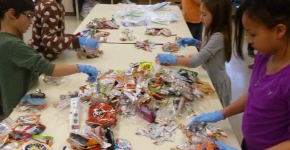
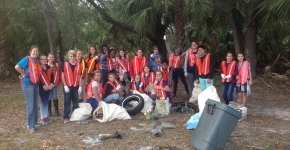

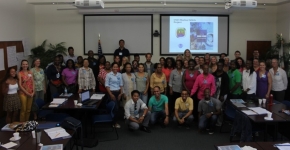
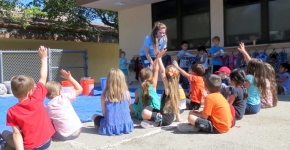
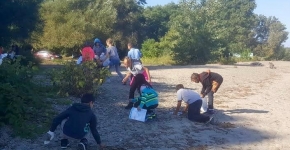

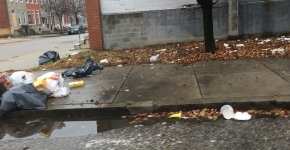
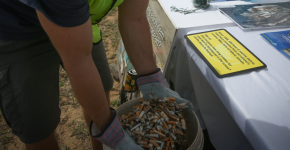
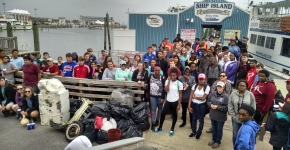
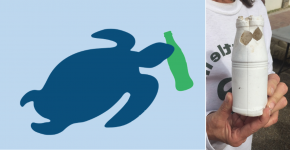
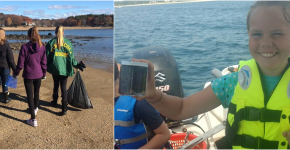
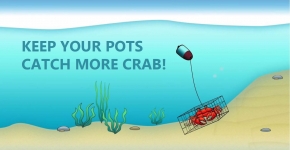
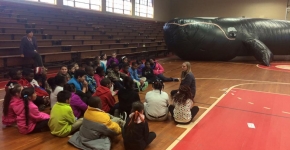
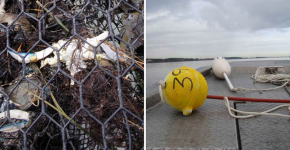
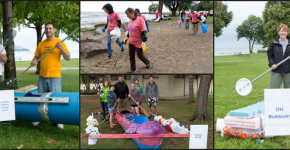
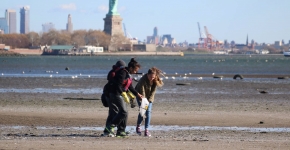
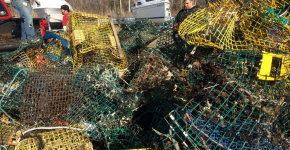
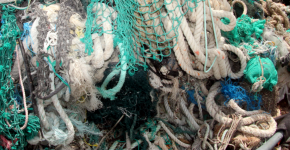
![This Fishing for Energy project uses side-scan sonar (left) to identify derelict lobster pots (right). (Photo Credit: NOAA/SBNMS and Applied Signal Technology, Inc. [left]; NOAA [right]) A side-scan sonar image on the left and a photo of derelict lobster pots on the right.](https://webarchive.library.unt.edu/web/20180919231932im_/https://marinedebris.noaa.gov/sites/default/files/styles/crop290wide150height/public/field/image/Picture1_0.png?itok=bIdoF5l1)
